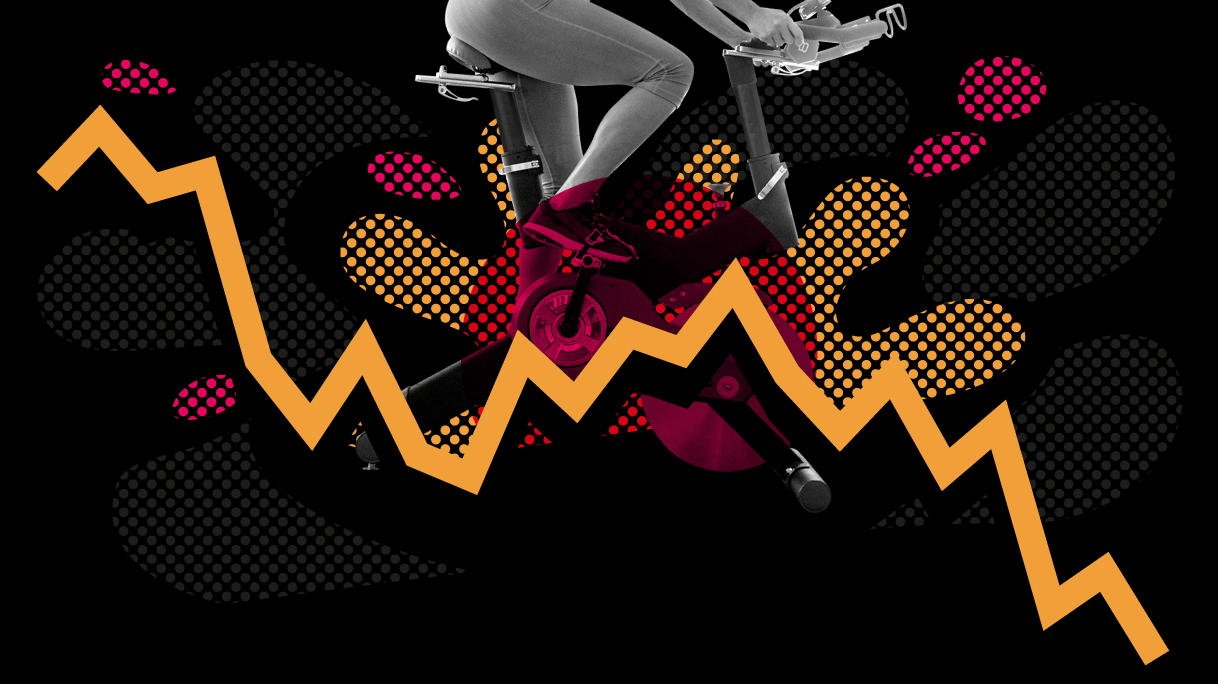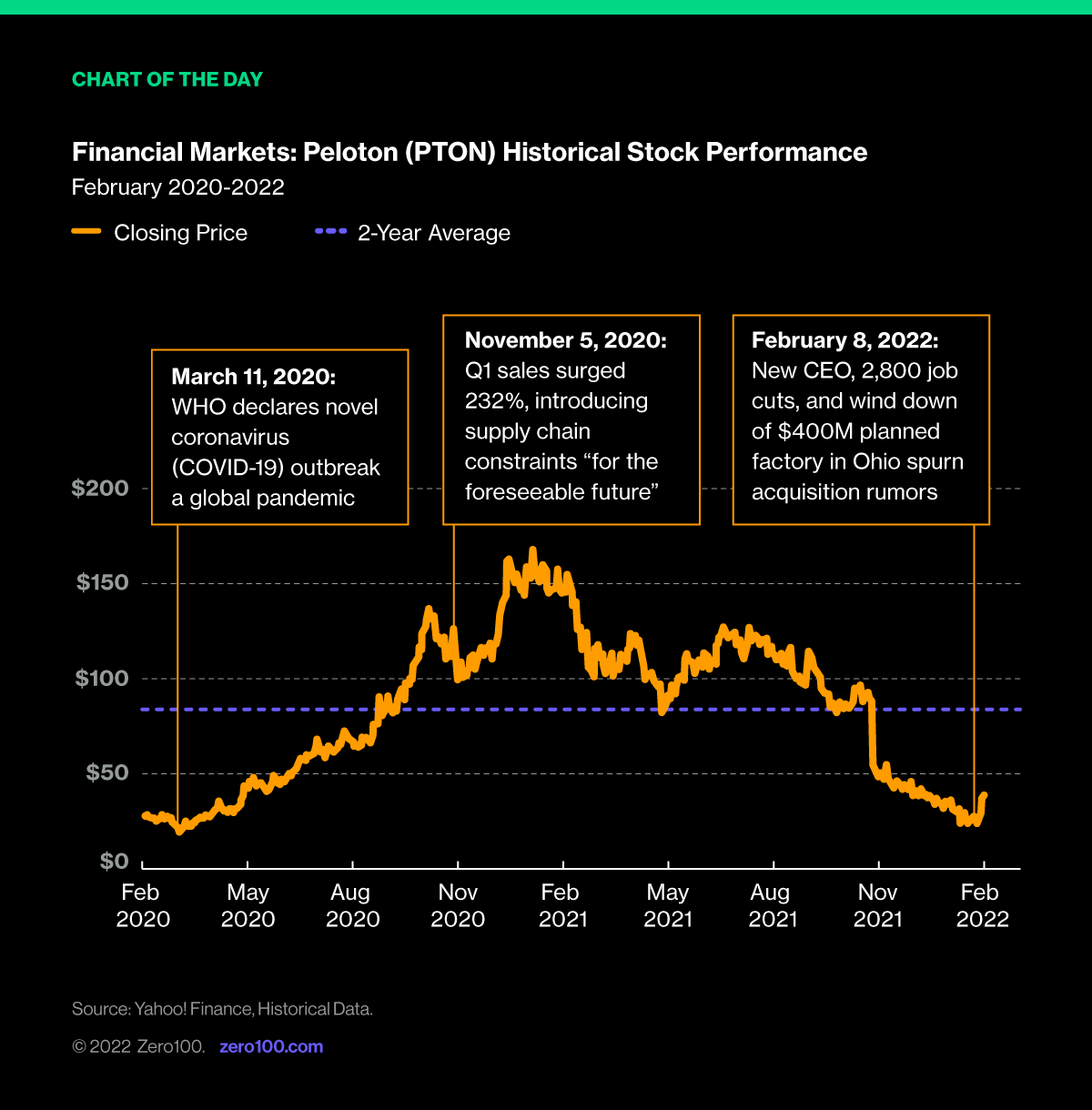
Lessons from the Peloton Pile-Up
While many pundits that pushed the stock during lockdown are now claiming Peloton is morphing into the “WeWork of the Pandemic,” we think it holds bigger lessons for supply chain professionals attempting to balance insatiable customer demand against operational accountability.
Peloton's Lessons for Operations Strategy
Peloton, darling of the COVID era, is falling back to earth. Down ~75% from its January 2021 high, the stock is a ripe takeover target for mega brands Apple, Amazon, and Nike. The news cycle is grippingly bad with Mr. Big and Mr. Billions both having heart attacks on TV and recently fired employees crashing new CEO Barry McCarthy's inaugural all-hands meeting. Not cool in terms of managing financial market expectations, and probably fair to blame founder John Foley for much of this.

Shipping Electrons Instead of Atoms
But let's back up and think about what Peloton is doing right in terms of operations strategy. First, they nailed the idea that shipping content is fundamentally easier than shipping product. Equipment sales are down, and the company lost $439 million this past quarter, but Connected Fitness Subscriptions were up 66% in the same period. Digital marketing expert Jeff Rosenblum explained what Peloton did right in a recent Bloomberg interview saying that they give customers “the right content, in the right place, at the right time, and improve their lives”.
Curation over Creation
It was also smart to put McCarthy in the CEO job given his experience with content kingpins Spotify and Netflix, both of which make money based on serving content through devices the customer already has (mobile devices, TVs, and sound systems). This is especially true given that the core competence of each is less a matter of content creation than content curation – something Peloton is great at. McCarthy brings impeccable CFO credentials which may also be handy with the legal battles Peloton seems to be losing too often.
Don't Manufacture it Now if You Don't Need It Now
Last, let's give them credit (late, but better than never) for backing off plans to scale up manufacturing in Ohio. The optics of this are terrible, especially when coupled with 2,800 layoffs, but the truth is they don't need the capacity right now and can't afford the capital stretch. Installed base equipment data is hard to find, but the company claims 6.6 million “members” and a 92% retention rate as of January 2022. People waited for months to get one delivered during the pandemic, and they don't exactly need to be replaced much.
Woulda, Coulda, Shoulda
With all that's right about Peloton, including its excellent product design (my opinion), it's incredibly immersive content and community experience, and the gift of a quarantine-driven perfect storm of opportunity why does it feel like a failure? I blame Wall Street. CNBC simply has to have a “breaking” story to tell 24 hours a day and this meant pumping the hot COVID stocks. This feels great on the way up and I'm guessing John Foley got a little bit dizzy on the fumes when his market cap was passing $50B. Maybe the smart move would have been to pump the brakes a bit and save some good news for later when the honeymoon cools, which it always does. I'm not saying slow down taking orders, just downplay the buzz.
Also, why not make friends instead of enemies on the way up? Peloton seems to have taken a lawsuit-first approach to protecting its intellectual property. This worked with little guys like Flywheel, but not bigger rival Echelon Fitness who somehow persuaded the U.S. Patent Office to disagree with itself and declare streaming on-demand exercise classes unpatentable. Now Peloton, despite its obvious leadership in the connected fitness world, is on its back foot arguing legalese instead of holding the moral high ground. Instead, they could done what Toyota did with its process IP – the Toyota Production System (TPS) – share it and simply stay ahead by being customer and quality driven.
Look to Apple for Answers
No company in the world demonstrates smart operations strategy in a digital age better than Apple. Its products, like Peloton's are awesome and the embedded content experience is sublime. The physical footprint of Apple's products is barely bigger than it was 20 years ago, and yet the company's market cap has increased 400-fold since then. Its supply chain and product leadership are a Trojan horse for its content leadership – an operations strategy lesson for everyone, especially Peloton.
Critical Reading
SUPPLY CHAIN DIVE
Disability Inclusion Programs Help Warehouses Hire Overlooked Talent
Commentary: As the labor shortage, particularly in retail and logistics, persists, companies are adopting inclusion programs to tap into a largely untapped resource for talent – people with disabilities – and are having success.
#talent #inclusion
SFGATE
Why a 22-Acre Lot Near Oakland's Jack London Square May Be Key To Solving Supply Chain Issues
Commentary: The Port of Oakland, an important gateway for U.S. Exports, was recognized by the federal government for setting up a 25-acre “popup site,” which has significantly improved the efficiently of cargo handoffs and eased supply chain congestion.
#shipping #innovation
TIME
There's a Problem With How We Train Truckers
Commentary: Planning for risk has been overlooked as companies rush to hire more truck drivers to account for high consumer demand.
#trucking #logistics